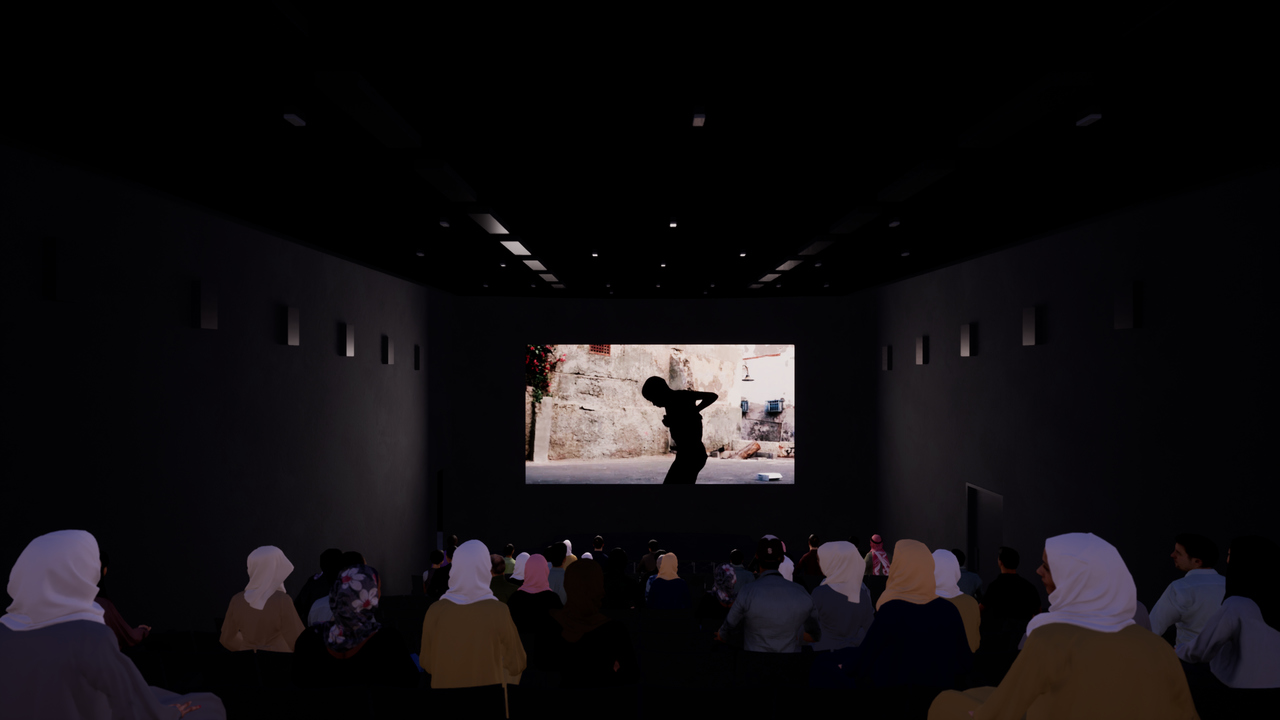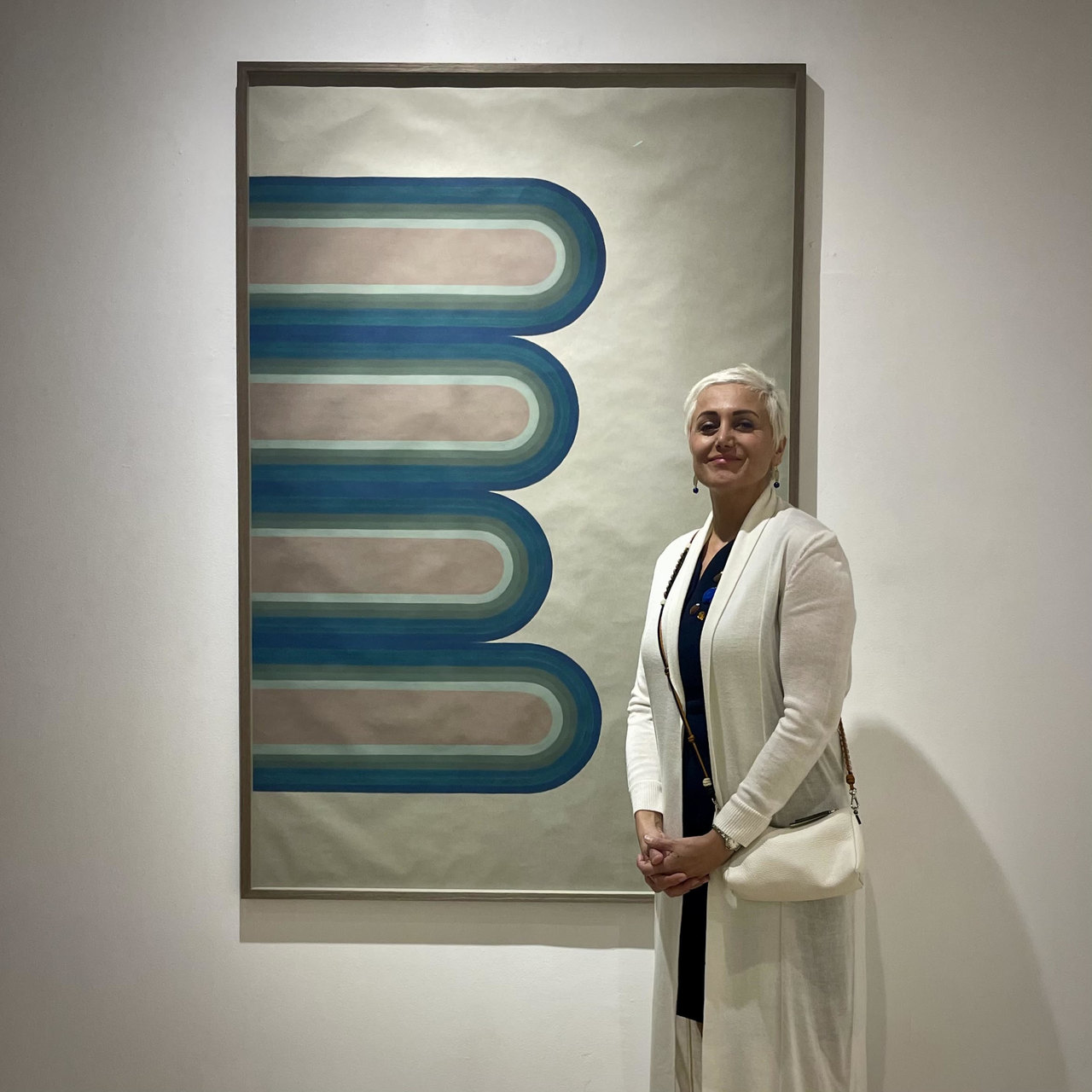
How long have you worked as an architect in Almaty?
I have been working and living in Almaty for almost two years now, before I was based in Astana where I arrived back in 2016 to be the design manager for interior fit out at Talan Towers office tower, and after I managed some other private projects there.

How was working on ALA Art Residency different from other projects?
When Dina Baitassova first told me about the idea of creating such an innovative concept in Almaty, I was extremely curious about it and when the design process started the whole team was excited by the idea of dealing with a quite unusual project. Having an existing two stories building with no particular historical value and turning it into something that would stimulate the artists to produce their works in a comfortable environment might represent a rather hard task for any architect.
Is it challenging designing an art space that will serve as an art hub with a strong community feel?
Since the very beginning we realized that we needed to step back a bit as designers in order to let the project literally grow day by day in our sketches: much time was spent in long brainstorming on how the design should appear to avoid strong interferences with the works that would be shown inside that space.
The community feel shows up very early during the design process when we started to share and discuss the project with some local artists, and we realized how much this art hub was needed and even dreamt about it within the future users of the art residency.

The location has an interesting past/story. Is it challenging to change the space both physically but also in terms of its perception?
It is true, the existing building was constructed by Japanese prisoners and was used as a guesthouse for the prison guards at that time; aside of the art residency sits the former prison of Almaty, a series of building that now are abandoned since a new jail structure has been built outside the city.
In our eyes this is as a kind of symbolic event: a place that witnessed lots of suffering and pain and loneliness now has a second chance to provide the city with joy, beauty, and love through all the works of the artists who will live and produce inside these spaces; in other words, from the detention of mind to virtuous freedom.

What technical tricks you used for the space (light, color, materials)
As soon as I started investigating the available rooms and common spaces was quite clear in my mind that we would need a huge amount of natural daylight, in particular for the exhibition area, and since the best light for this kind of use is the zenith light, I started to think how I could let this daylight flow gently inside the space. This is where the idea of having a huge skylight on the roof comes from and it then developed also with the increasing of the roof elevation in order to achieve a new floor under it, a mansard.
To increase the exhibition space, we also decided to demolish a huge portion of the existing loading wall, install there a proper iron structure in the shape of a white portal so to connect the central core with the adjacent room. And finally, we added a new volume, a horizontal extension with only zenith light in it, which is connected to the main exhibition area by a large stair/amphitheatre-look like sitting place.
This extension dialogues well with the south elevation providing also a protected entrance portico and represening the iconic element of all general external/internal design.

What do you like the most about the project? Which area is your favorite?
I think we somehow managed to show clearly which are the new added elements and which are the old existing parts of the building, but also to keep all design well balanced and rational, still able to give the visitors nice emotions and to stimulate every one’s curiosity when walking around and inside the art residency.
I cannot say I have a favorite area since I like the whole project, but most probably the central heart of the building with its high huge skylight and the “origami” metal staircase climbing up to the mansard looks to me as a meaningful element.

As someone who comes from Italy, the country with a huge print in history of art, what is your perception on the art scene in Almaty?
When you talk about the art scene in Almaty you need to take into consideration that this beautiful city is a perfect melting pot of different ethnicities and cultures, which in my opinion creates a unique art panorama: the actual local art scene is the consequence of many historical/social layers that sit one on each other and influence one each other. And this is one of the reasons why I fell in love with Kazakhstan and its people: the virtuous diversity, the vast territory, the magnificent silk way story and all the different cultural heritage.
Italy has a huge print in history of art, but it is now kind of stuck and hypnotized by its own past, while in Almaty I feel the beating heart of a young and ever-changing artistic organism.
Do you think ALA has all it takes to take a central part in the contemporary art scene?
I do think so, differently from Astana, Almaty has a more developed history and a more complex and powerful attitude towards all arts: this is the place where we should support the local contemporary artists, together with the most known modern artist, and from the continuous dialogue between different generations and styles and techniques I think it will be possible to achieve impressive and unseen results.

Are you excited to be onboard with such an exciting project?
Along the whole design process for ALA art residency the excitement within the team members (also Nargiz Magayeva with her Phaenomen studio was a brilliant support) was quite visible and we could not hide our enthusiasm for being part of this project. In my experience the best results in design always come from a multicultural team of high-quality professionals like it happened for ALA project, but also in my previous works in Astana and in Almaty, and I honestly feel I am lucky to be onboard with this unique project.
Did you enjoy the opening? Whose art you liked the most?
The opening was an amazing event, with so many exciting events, music, dancing, delicious Italian food and wines and, of course, the first ALA exhibition inside the partially renovated building. Dina and her family and her company did such an incredible work and they managed to do it in a really short time. Nargiz organized the ALA design process exhibition inside the future reception and book shop on the ground floor, to let all visitors take a pleasant journey inside what will become ALA art residency.
I really enjoyed all the works of the first exhibition, and I am still impressed by the numerous different techniques all artists managed to perform: emotional installations, natural materials side by side with industrial ones, reuse of old objects, unbelievable chromatisms, in other words…ALA!



